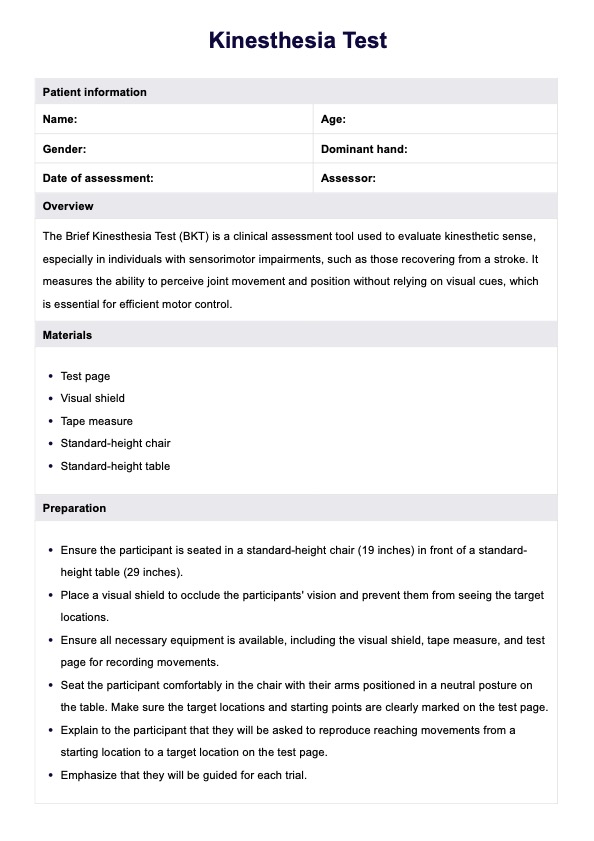Kinesthesia testing assesses an individual's ability to sense movement and position of their body parts.

Kinesthesia Test
Explore how a Kinesthesia Test works. Get access to a free test template for your patients.
Kinesthesia Test Template
Commonly asked questions
An example of kinesthesia is being able to accurately perceive the movement of your arm when you close your eyes. For instance, if someone moves your arm at the elbow joint, you should be able to sense the direction and range of that movement without seeing it, relying on kinesthetic awareness of joint angles and muscle activity.
Proprioception refers to the overall sense of body position and orientation in space, encompassing static and dynamic states, such as standing or sitting. It is integral for maintaining balance and performing coordinated movements. Proprioception is often evaluated using assessments like the distal proprioception test, which measures an individual's ability to detect changes in joint angle. Additionally, somatosensory stimulation training can enhance proprioceptive awareness by targeting the sensory feedback systems responsible for detecting body position.
Kinesthesia, on the other hand, specifically relates to the sense of movement, such as detecting changes in joint angles during motion. While proprioception includes kinesthesia, kinesthesia is focused on the perception of movement and the ability to sense how the body parts move in space.
EHR and practice management software
Get started for free
*No credit card required
Free
$0/usd
Unlimited clients
Telehealth
1GB of storage
Client portal text
Automated billing and online payments











